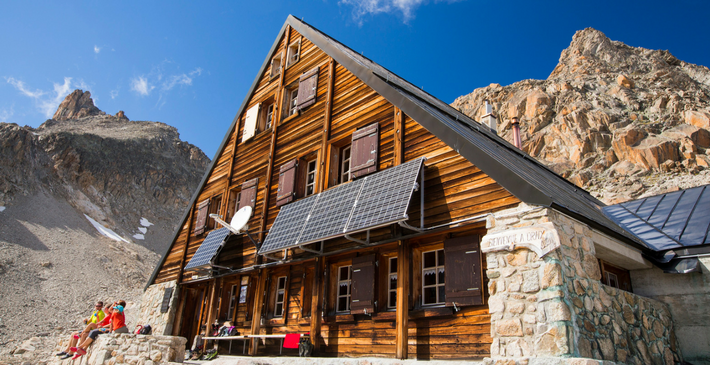
When designing a domestic off-grid system, the main loads to consider are as follows:
Each of these is discussed below, within the context of ‘off-grid’.
Both electric cooking and heating draw large amounts of power. For this reason, it is often impractical build off-grid systems which contain electric hobs and appliances such as microwaves. Consequently, it is recommended that off-grid systems utilise either gas or solid fuel burners for both cooking and space heating. Good insulation and passive solar design will also help to reduce the need for heat.
If a wind turbine is included in the system, it can be used to power immersion, space and storage heaters. Peak wind power production usually coincides with colder weather. However this should not be relied upon as a primary source of power.
Electric fridges and freezers should be avoided in off-grid systems unless they are high efficiency models. If possible, gas powered fridges should be used as an alternative.
Daily energy consumption estimates in kWh should be available from manufacturers to help with system sizing.
For small off-grid systems (vehicles, caravans, boats etc.), it’s best to choose low voltage, DC lighting which can be powered straight from the battery. This doesn’t require an inverter and short wiring runs mean low gauge wire can be used; therefore the system costs are reduced.
For larger off-grid installations, it is often more cost effective to use an inverter to supply AC fittings via any pre-existing wiring. Any lights should be replaced with high efficiency compact fluorescent bulbs.
Pumping requires a large amount of power, therefore careful considerations must be made when designing off-grid systems which include pumps. In particularly sunny climates, it is often advantageous to utilise direct solar pumping technology.
Most small appliances fall into two categories:
Most large appliances (vacuum cleaners, power tools and pumps etc.) run off of AC only. In order to use these, the system inverter has to be a suitable size.
In most domestic situations, washing machines make up the largest electrical load. Since they only run for fixed periods, it’s usually advantageous to run them off of a standby generator with any spare generator capacity being used to charge the battery.
Copyright © Spirit Energy 2026 · info@spiritenergy.co.uk · 0118 951 4490
Jobs and Careers
Interested in joining the Spirit team? Email jobs@spiritenergy.co.uk
Spirit House, 25 Albury Close, Reading, RG30 1BD
(Location formerly known as 44 Portman Road, Reading, RG30 1EA)
Spirit Energy is the trading name of Spirit Solar Ltd · UK Company Number 07138647
Although care is taken to ensure that the information on our website (www.spiritenergy.co.uk) and any guides, calculators or checklists provided by us, electronically or otherwise, are accurate and up-to-date, we cannot accept any responsibility for mistakes or omissions. We enter into no express or implied conditions, warranties, terms or representations regarding the quality, accuracy or completeness of the information. We exclude to the extent lawfully permitted all liability for loss or damage, whether direct, indirect or consequential arising out of your use of our website or any guides, calculators or checklists provided by us, or from any information or omission contained in our website or any guides, calculators or checklists provided by us.